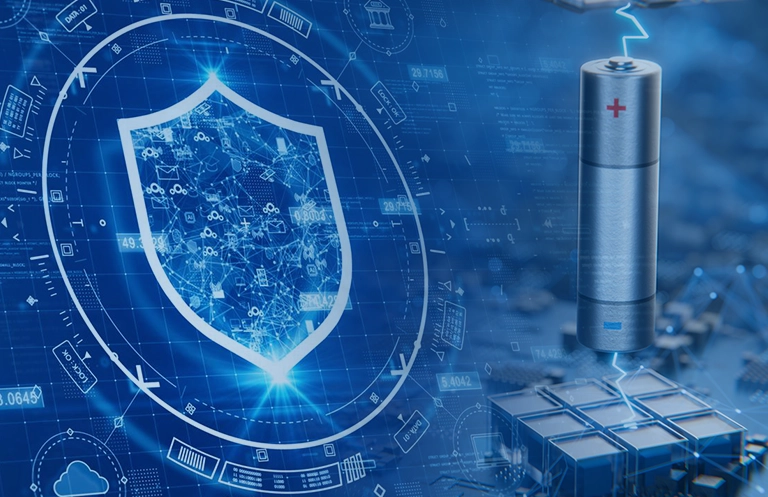Background
Access control systems are nowadays becoming a common sight in any security set-up. Smartphones are a good example of how you can incorporate several access control mechanisms, including fingerprints, iris and face detection, smartcards, etc., into one, single device.
If you’ve closely looked at the hardware specifications for any top-of-the-line handsets, there’s a good chance that you saw the NFC listed on the spec sheet. In this blog, we will discuss how NFC-enabled smartphones can be used to serve as a unique ID for all your access control requirements.
What is NFC?
NFC stands for “Near Field Communication” and, as the name implies, it enables short range communication between compatible devices. This requires at least one transmitting device, and another receiving device. A range of devices can use the NFC standard and be considered either active or passive, depending on how the device is supposed to work.
The technology behind NFC is very similar to radio-frequency identification (RFID) commonly used in the security cards and keychain fobs that you likely already use to get into your office or gym. NFC is an evolution of RFID that offers more advanced features and better security, but the two technologies still share a lot of things in common.
What is NFC on Android?
As mentioned above, NFC is a set of short-range wireless technologies that typically require 4 cm or less to initiate a connection. NFC lets you share small payloads of data between an NFC tag and an Android-powered device, or between two Android-powered devices. Tags can range in complexity. A game-changing technology that allows your Android-powered devices to connect and share data over short distances. With NFC, you can instantly connect with other Android devices, seamlessly transfer files, and even explore exciting new ways to enhance your daily life.
Passive NFC devices include tags, and other small transmitters, that can send information to other NFC devices without the need for an in-built power source. However, they don’t really process any information sent from other sources and can’t connect to other passive components. Passive devices don’t require their own power supply and can instead be powered by the electromagnetic fields produced by an active NFC component when it comes in range.
Active devices can both send and receive data, and can communicate with each other as well as with passive devices. Smartphones are by far the most common implementation of active NFC devices, but public transport card readers and touch payment terminals are also good examples of this technology.
How NFC works?
Just like Bluetooth and Wi-Fi, and all types of other wireless signals, NFC works on the principle of sending information over radio waves. Near Field Communication is another standard for wireless data transitions, which means that there are device specifications which adhere to wireless protocols. The technology used in NFC is based on older RFID (Radio-frequency identification) ideas, which use electromagnetic induction in order to transmit information. Passive NFC devices draw power from the fields produced by active devices, but the range is only short. The transmission frequency for data across NFC is 13.56 megahertz, and data can be sent at either 106, 212 or 424 kilobits per second, which is quick enough for a range of data transfers.
What are the NFC modes?
In order to determine the sort of information that has to be exchanged between devices, the NFC standard has three distinct modes of operation for compliant devices. We can use these modes for different situations.
- Card Emulation mode: An NFC device in card emulation mode can replace a contactless card or tag. This will enable NFC devices to be used with existing contactless card infrastructure in applications including ticketing, access control and payments.
- Reader / Writer mode: NFC-enabled devices are able to read and write to NFC and many other contactless cards. For example, if an NFC tag is attached to a poster, the NFC smartphone can “tap” the tag to access the information stored in the tag (e.g. coupons, maps, product information, etc) easily and conveniently.
- Peer-to-Peer mode: Peer-to-peer mode enables two NFC devices to exchange data between them. Due to the low transfer speed of NFC, if large amounts of data need to be sent, peer-to-peer mode can be used to create a secondary high speed connection (handover) like Bluetooth or WiFi. In this case, the NFC is used to negotiate the optimal communication protocol and transfer authentication data for the secondary protocol. The file or data is then sent over the high capacity protocol (i.e. Bluetooth, WiFi, etc).
NFC Standard
MIFARE (NXP) and FeliCa (Sony) are two proprietary contactless solutions that have been widely adopted around the world. These solutions use ISO/IEC 14443 and JIS-X 6319 standards respectively. NFC is compatible with these standards and proprietary solutions, and therefore. is also compatible with many payment terminals around the world.

In 2002, NFC was first standardized under the ECMA-340 specification. It was later revised (ECMA-340 2nd Edition, 2004) and approved as ISO/IEC 18092:2004. The specifications define the modulation, data rate and transport protocol among other requirements for both active and passive communications. In 2005, ISO/IEC 21481 was approved which was designed not to interrupt any ongoing 13.56 MHz communications emerging from devices using ISO/IEC 18092, ISO/IEC 14443 or ISO/IEC 15693. The NFC Forum has also completed 16 standards to enable NFC devices to be interoperable with all contactless and NFC cards.

Transition of Access Control mechanisms from Plastic cards to Smartphones
In the fields of physical security and information security, access control is the selective restriction of access to a place or other resource. The act of accessing may mean consuming, entering, or using. Permission to access a resource is called authorization.
Multiple factors of authentication, including biometrics, can increase the probability that an individual presenting a card to a reader is the same person to whom the card was initially issued. Biometrics authenticates identity by measuring and verifying an individual’s unique physical characteristics, such as fingerprints, hand and face geometry, or patterns found in the eye’s iris. Since these identifiers can’t be borrowed or stolen, biometrics provide identity authentication with a strong degree of confidence.
Until recently, biometric templates such as those for iris recognition were carried on a plastic credential and presented for authentication by holding the card in front of an iris recognition camera. Now, these same templates can be carried inside an NFC-enabled Smartphone along with other digital ID credentials for physical and logical access control.
How eInfochips can help with your Access control needs?
eInfochips helps many Identity Management companies to develop unique Access Control Systems, with solutions cutting across embedded hardware and software stacks. We have extensive experience in both biometric and non-biometric solutions.
Check out this blog to know about the recent innovation in Touchless Biometrics and how we helped a leading European company with engineering design and development
Conclusion
NFC is emerging technology and Access control systems can be improved by this kind of features. eInfochips has capabilities both in terms of software/firmware development and hardware development for Access control system and NFC.













